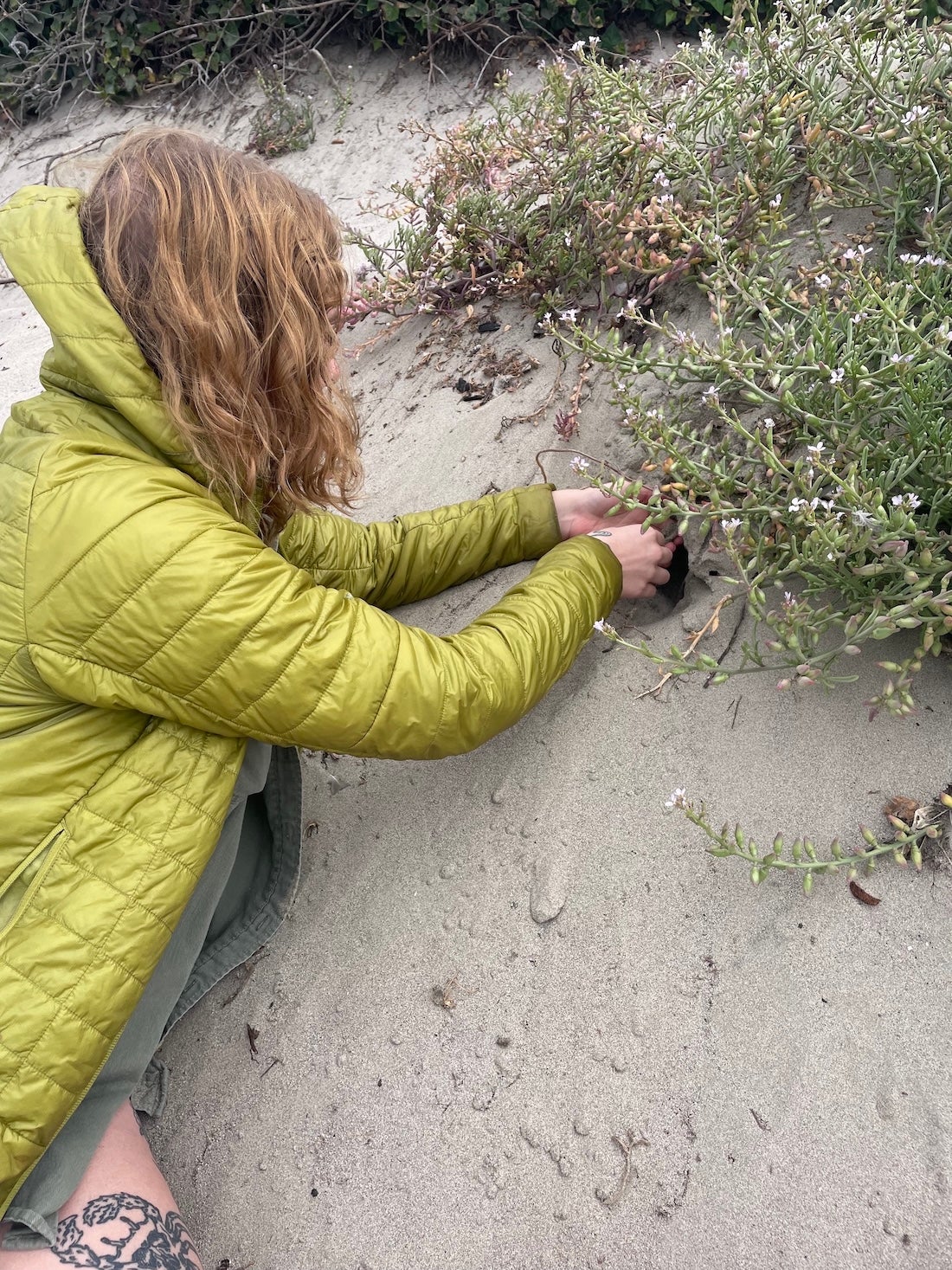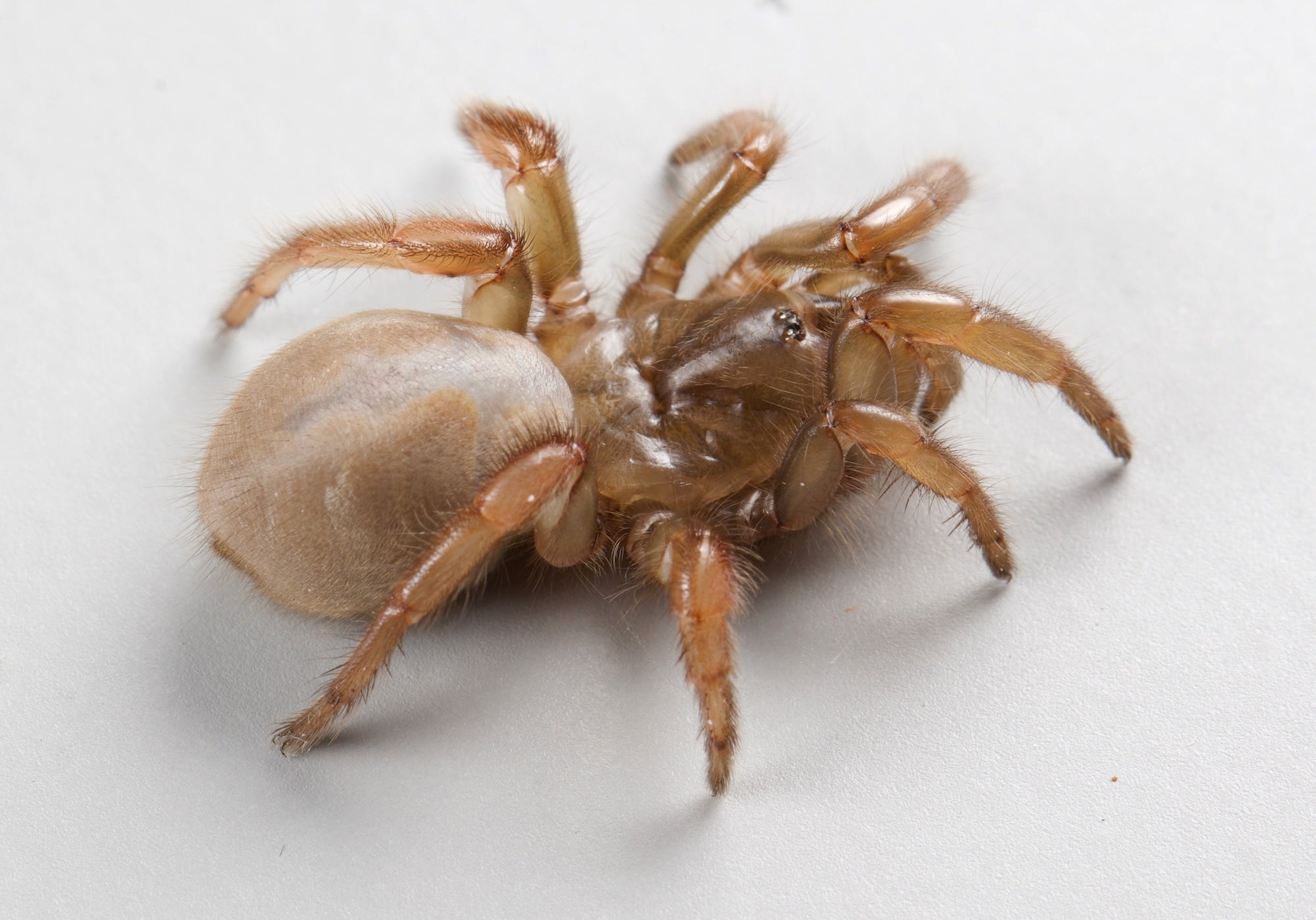Scientists at the University of California, Davis, have discovered a new species of trapdoor spider lurking in California's coastal sand dunes. The newly identified Aptostichus ramirezae is a close relative of Aptostichus simus, a species found along the coast from Monterey to Baja California, Mexico.
The study, published in Ecology and Evolution, shows that what looked like one species, is actually two.
"While there are over 50,000 species of spiders worldwide, there are probably hundreds of thousands left to be discovered, even along the coast where new spider species may be hiding just underfoot of California beachgoers," said senior author Jason Bond, a professor in the UC Davis Department of Entomology and Nematology.
A hidden species revealed
Trapdoor spiders are small, secretive relatives of tarantulas. Females live their entire lives underground in silk-lined burrows sealed with a hinged, camouflaged door. They wait quietly for vibrations above, emerging only to catch prey that wanders too close.
"There are now four known species of trapdoor spiders in California that live exclusively in coastal dune habitats," said corresponding author Emma Jochim, a doctoral student in the UC Davis Department of Entomology and Nematology. "The one we were looking at as part of this study was the most widespread, ranging from Moss Landing near Monterey down to Baja California - which is a pretty wide range for a trapdoor spider, given that they don't easily leave their burrows to disperse."

Jochim and her colleagues analyzed genomic DNA from Aptostichus simus spiders collected across that range. Bond long suspected that it comprised cryptic species, meaning it was one of two or more species that look nearly identical but are genetically different.
Researchers looked not just at molecular data, but also their distribution. Cryptic species are reproductively isolated.
"Based on what we know about their natural history and lifestyles, they're not going to be able to disperse to different coastal dunes to reproduce and 'mix' with each other," Jochim said.
What's in a name
Professor Jason Bond decided to name the new brown, chunky, quarter-sized spider Aptostichus ramirezae. Bond is no stranger to naming new spider species. The arachnologist has named species after celebrities, musicians, photographers and even magicians. Notables include Aptostichus stephencolberti or Myrmekiaphila neilyoungi and Aptostichus barackobamai.
This new species is named for Martina Giselle Ramirez, dean of the College of Science at California State University, Stanislaus and formerly dean of natural sciences and biology professor at St. Norbert College. Ramirez is a highly regarded arachnologist who pioneered early works on trapdoor spider population genetics and has championed underrepresented students in STEM disciplines.
More than a Halloween creature
The scariest part about this discovery isn't the spider, it's what could happen if its home is lost for good.
Both Aptostichus simus and Aptostichus ramirezae live only in coastal dunes from central California to northern Baja California, Mexico including some in the Channel Islands. These habitats are shrinking due to many factors including development, erosion, wildfire and sea-level rise.
"They're definitely at risk, especially the lineage Aptostichus simus," Jochim said. "The new species has a much wider range, but Aptostichus simus is now really only found in San Diego, and projections for sea-level rise in that area are very grim. These spiders are not really able to adapt that quickly to new habitats."

Understanding genetic differences among these spiders helps scientists identify which populations most need protection. While it may seem spooky to study spiders, Jochim said documenting spiders helps us understand the diversity of our planet.
"If we don't know how many species are in an area or understand the patterns of genetic diversity between populations, we don't really know what areas would be most important for conservation efforts," she said.
Other authors of the study include James Starrett and Hanna R. Briggs with UC Davis. The work was supported by the National Science Foundation.






